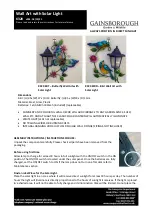
Figure 4: LiDAR sensor with 4 scan planes
3.6.2
Range finding
The device emits beams pulsed by a laser diode. If the laser beam is reflected by an
object, the reflected beam is received by the sensor.
The distance to the object is calculated on the basis of the time that the pulsed light
beam requires to be reflected and received by the sensor.
t
1
2
1
Send pulse
2
Receive pulse
The device uses SICK’s own HDDM+ (High Definition Distance Measurement plus)
technology. With this measurement process, a measured value is formed statistical
evaluation of multiple single pulses. The multi-pulse feature of HDDM+ evaluates up
to 165000 echoes per second with every scan. Every single HDDM+ measured value
output therefore provides even more information because it is not just composed of
a single time-of-flight measurement, but includes evaluated information from numer‐
ous pulses. In this process, the digitized echoes are compiled into data packages
which overlap during evaluation. This guarantees a significantly more stable time and
distance measurement.
3.6.3
Direction measurement
The laser beams are emitted using internally rotating sender-receiver units (SRUs) and
scan the surroundings orbitally. The received measured values are assigned to the
associated angular cut and thus to the direction.
3.6.4
Impact of object surfaces on the measurement
The received signal from a perfectly diffuse reflection from a white surface (diffuse
Lambertian reflector) corresponds to a remission of 100%. By this definition, surfaces
that reflect the light in bundles (specular surfaces, reflectors) have remissions of over
100%.
Reflection
Most surfaces produce a diffuse reflection of the laser beam in all directions. The
structure (smooth or rough), shape (flat or curved), and color (light or dark) of the
surface determine how well the laser beam is reflected.
3
PRODUCT DESCRIPTION
14
O P E R A T I N G I N S T R U C T I O N S | MRS1000P
8024927/1AZF/2021-05-10 | SICK
Subject to change without notice















































